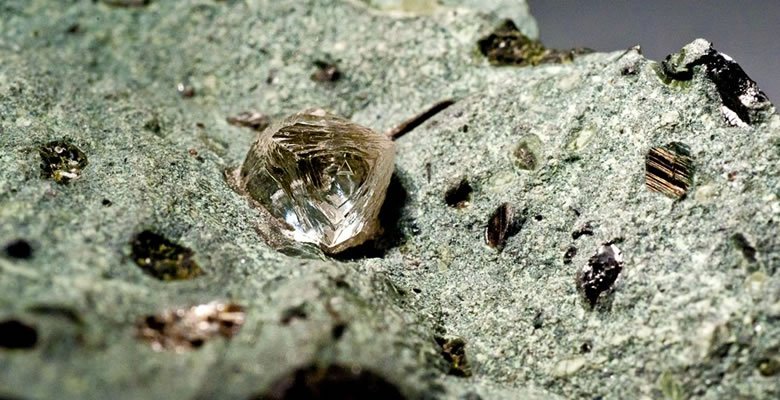
Diamonds are typically thought of as being formed deep within the Earth’s mantle, but a growing body of evidence suggests that some diamonds may actually form in the oceanic lithosphere. The oceanic lithosphere is the outermost layer of the Earth’s crust, and it is made up of the upper mantle and the overlying crust.
There are two main types of diamonds that are thought to form in the oceanic lithosphere: volcanic diamonds and diamonds in ophiolites. Volcanic diamonds are formed when carbon-rich fluids from the mantle rise up into the oceanic crust and are trapped in magma chambers. When these magma chambers erupt, the diamonds are carried to the surface in volcanic rocks.
Diamonds in ophiolites are formed when oceanic crust is subducted back into the mantle. As the oceanic crust sinks, it is subjected to high pressure and heat, which can cause the carbon-rich minerals in the crust to crystallize into diamonds. These diamonds are then carried back up to the surface when the oceanic crust melts and erupts.
Moissanite engagement rings are becoming increasingly popular as an alternative to traditional diamond engagement rings. Moissanite is a gemstone that is made up of silicon carbide, and it has many of the same properties as diamonds, including its hardness, brilliance, and fire. However, moissanite is much less expensive than diamonds, making it a more affordable option for many people.
The discovery of diamonds in the oceanic lithosphere has raised a number of questions about the formation of diamonds and the role of the oceanic crust in the diamond cycle. However, more research is needed to fully understand the origin of these diamonds and their implications for our understanding of the Earth’s interior.
Here are some additional details about volcanic diamonds and diamonds in ophiolites:
Volcanic diamonds: Volcanic diamonds are typically found in kimberlite pipes, which are vertical structures that form when magma rises up from the mantle and erupts onto the surface. Kimberlite pipes are often found in association with volcanic rocks, such as basalt and rhyolite.
Diamonds in ophiolites: Ophiolites are fragments of oceanic crust that have been thrust up onto the continents. Diamonds are often found in ophiolites, and they are thought to have formed when the oceanic crust was subducted back into the mantle. Moissanite engagement rings: Moissanite engagement rings are becoming increasingly popular as an alternative to traditional diamond engagement rings. Moissanite is a gemstone that is made up of silicon carbide, and it has many of the same properties as diamonds, including its hardness, brilliance, and fire. However, moissanite is much less expensive than diamonds, making it a more affordable option for many people. Ultimately, the decision of whether to choose a volcanic diamond, a diamond in an ophiolite, or a moissanite engagement ring is a personal one. There are pros and cons to each option, and the best choice for you will depend on your individual needs and preferences.